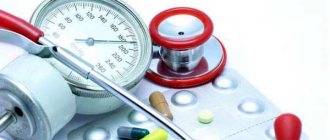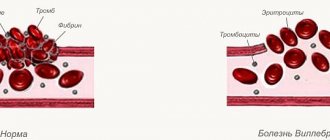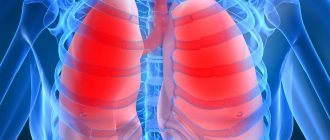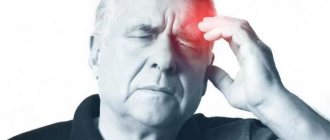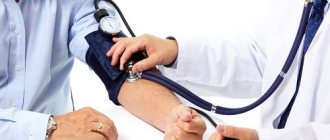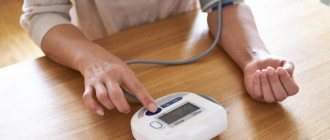Pulse is...
The pulse is the jerky, rhythmic vibrations of the walls of blood vessels associated with cardiac cycles . In a broader sense, the pulse refers to any changes in the vascular system associated with the activity of the heart; therefore, arterial and venous pulses are distinguished.
When examining a patient, the most important thing is the arterial pulse. Arterial pulse is a rhythmic, jerk-like oscillation of the walls of the arteries associated with changes in their blood supply. Venous pulse is the pulsation of the jugular veins in the neck, as well as a number of other large veins located in close proximity to the heart. Venous pulses in peripheral veins are rare. The properties of the pulse are determined by its frequency, tension, filling and rhythm. The pulse is felt with fingers (except the thumb), which are placed on the patient’s radial artery - at the base of his thumb.
For your information
A songbird's heart beats at up to 1,000 beats per minute; mice - 320-780; rabbit - 120-310; cats - 140; dogs - 100-139; horses - 40; elephant - 25-28.
The pulse rate, that is, the number of beats per minute, in an adult healthy person ranges from 60 to 80, but can vary widely depending on age, gender, body temperature and environment, as well as physical stress (the more intense muscle work, the faster the pulse). Rhythm - intervals between pulse beats.
In a healthy person they are absolutely the same and the pulse is rhythmic; however, with a number of heart diseases, arrhythmia occurs: the intervals between heartbeats become unequal, and the correct rhythm is disrupted. By the voltage of the pulse, you can indirectly judge the value of blood pressure, and by its filling, you can indirectly judge the strength of the heart contraction. An increase in heart rate is called tachycardia, and a decrease in heart rate is called bradycardia.
In Tibetan medicine, the pulse serves as the main carrier of information about the condition and health of internal organs.
Pulse diagnostics is a complex science that requires a long learning curve. An experienced diagnostician can distinguish up to 360 different pulse indicators. A thorough examination of the pulse allows the doctor to establish the nature of the imbalance of physiological energies in the direction of its decrease or increase, as well as to identify which physiological energy is in an unbalanced state. It should be remembered that the pulse readings on the right and left wrists are not the same, and therefore it is better to check the pulse on both hands.
Symptoms of the disease
Different people have different symptoms. often begins with the patient not having any serious complaints. However, you should pay attention to frequently recurring conditions:
Other symptoms are also possible. The first degree of arterial hypertension is not characterized by damage to internal organs. However, in order to promptly stop the deterioration of the situation, it is necessary to pay attention to the above symptoms.
Arterial hypertension of the 2nd degree can provoke the following conditions:
- Spasm of the vessels of the fundus.
- The walls of the left ventricle may be enlarged.
- Protein may appear in the urine.
- There are signs of damage to the walls of large vessels by the atherosclerotic process.
Arterial hypertension of the 3rd degree is characterized by the involvement of affected organs in the process of pathological processes. The following diseases may appear:
- Heart failure.
- Papilledema.
- Angina pectoris.
- Myocardial infarction.
- The development of atherosclerotic processes, narrowing and obstruction of blood vessels.
Stage 3 arterial hypertension has a significant number of complications.
Manifestations of the secondary form of pathology are more pronounced. The following phenomena are possible:
- Edema.
- Pain in the lumbar region.
- Dysuric phenomena.
- Signs of inflammatory processes in a blood test.
- Changes in urine analysis.
Arterial pressure
Blood pressure increases with increased physical activity or stress , providing the body with an increased need for oxygen and energy. Blood pressure also depends on the resistance exerted by the blood vessels, and this, in turn, depends on their tone (tension), ability to expand and contract.
A similar increase in pressure is observed in a healthy person in a number of circumstances. But after the end of exposure to one or another factor that requires an increased supply of blood to the body, the pressure quickly returns to normal. If, for a variety of reasons, the tone of the vessels increases and they are constantly in a somewhat reduced (narrowed) state, arterial hypertension, or hypertension, occurs.
Etiology
Since blood pressure is regulated by a fairly large number of mechanisms, there are also many reasons for the development of hypertension. First of all, it should be noted that primary and secondary arterial hypertension are distinguished. Let's look at their features:
Primary (essential) arterial hypertension is a disease in which blood pressure levels increase without the presence of a background, predisposing disease. When hypertension is detected, the patient is carefully examined, and most often the doctor detects the presence of one or another pathology that provokes an increase in blood pressure. If no such diseases are identified, a diagnosis of “essential hypertension” is made.- Secondary – develops as a complication of any underlying disease. The reasons may be:
- CVS pathologies. Congenital and acquired defects of the heart and blood vessels, damage to the heart muscle (myocarditis, myocardial dystrophy), atherosclerosis lead to disruption of the functioning of the system as a whole. This inevitably leads to hypertension;
- taking medications. Taking a number of medications (contraceptives, glucocorticosteroids, antidepressants, non-steroidal anti-inflammatory drugs, Erythropoietin) also has an effect on increasing blood pressure levels. Medicines should be taken only when prescribed by a doctor;
neurogenic causes. Blood pressure levels are regulated, among other things, by the nervous system. There are areas in the brain that affect the tone of the vascular wall. Peripheral nerves can regulate both the functioning of the heart and blood vessels. Strokes, TBI, brain tumors, neuropathy can lead to the development of hypertension;- renal pathologies. Kidney tissue produces the hormone renin, which affects the tone of the vascular wall. With a number of diseases of the renal tissue (polycystic disease, glomerulonephritis, nephropathy, pyelonephritis) or with damage to the renal vessels, the production of renin increases.
endocrine disorders. As noted above, a number of hormones (adrenaline, norepinephrine, renin, aldosterone) have a direct effect on the contractility of the heart muscle and vascular tone. Thus, in diseases of the kidneys and adrenal glands (usually cancer), the production of these biologically active substances increases, which is also the cause of the formation of hypertension;
Pressure measurement
There are two types of pressure: maximum and minimum. The maximum (systolic) is observed when the left ventricle contracts. The minimum (diastolic) is observed before the next heart beat. The average systolic pressure of a healthy person is approximately 120 mmHg. Art . Diastolic pressure is about 80 mmHg. Art . Typically these numbers are designated as follows: 120/80.
Semi-automatic and automatic electronic tonometers are most suitable for measuring blood pressure at home. Their use does not require any prior training and allows you to obtain accurate blood pressure data by pressing one button.
How to measure blood pressure correctly?
- First of all, relax. Before measuring blood pressure, breathe quietly for 3-5 minutes. Do not speak.
- Take a comfortable position with your back supported.
- Place your hands on the table so that they are at heart level and sit for a while.
- Wrap a correctly sized cuff around your upper arm so that your finger fits freely between the cuff and the surface of your shoulder.
- Make sure the bottom edge of the cuff is approximately 2.5 cm above the crease of your elbow.
- In automatic tonometers, the pressure in the cuff is created by pressing a button, and in semi-automatic ones there is a rubber pressure bulb.
- Look at the display, where two numbers should appear - for example, 120/80: these are the systolic and diastolic pressure values, respectively.
- Deflate all the air from the cuff.
- If a re-measurement is required, wait 2-3 minutes.
- Increase in blood pressure for every 10 mm Hg. Art. increases the risk of developing cardiovascular diseases by 30%. People with high blood pressure are 7 times more likely to develop cerebrovascular accidents (stroke), 4 times more likely to develop coronary heart disease, and 2 times more likely to develop damage to the blood vessels of the legs.
What kind of hypertension is there?
In 2003, cardiologists presented a classification of hypertension by degree. They proposed three categories based on pressure measurement indicators.
The degrees of hypertension were determined:
- First degree - normal blood pressure from 140/90 to 159/99; it is stable, but there is no effect on the body.
- Second degree – from 160/100 to 179/109; you will have to use medications to lower blood pressure levels, usually there is an increase in the left heart ventricle.
- Third degree – 180/110; circulatory problems, kidney failure, or heart attack may occur.
Risk factors for developing hypertension are:
- age;
- blood cholesterol level – exceeds 6.5 mmol;
- overweight;
- predisposition;
- cigarettes, alcohol and fatty foods;
- physical inactivity.
Risks are also distributed into groups and are important in determining the prognosis of complications. There are four levels:
- 1st – low; the likelihood of complications occurring is less than 15% in the first ten years after diagnosis of the disease;
- 2nd – average; probability – from 15 to 20%, also in the first ten years;
- 3rd – the probability increases to 30%;
- 4th – rather increased risk of complications – more than 30%.
It is important to understand that levels are unstable. For example, a patient with a low risk of stage 1 hypertension may become at risk of stage 2 unless he stops smoking or starts watching his diet. When a patient does not change his lifestyle, he only complicates the course of the disease and increases the likelihood of cardiovascular diseases.
Cause
The true cause of primary hypertension is considered to be a genetically determined disease in which excess amounts of calcium and sodium accumulate in small vessels - arterioles. As a result, the tone of the arteriole increases, its walls become swollen, and over time they become denser, sclerotic, and the lumen of the vessel narrows.
This leads to an increase in peripheral vascular resistance to blood flow and an increase in cardiac output, which is expressed by an increase in blood pressure.
Characteristics of blood pressure levels
| Category | Systolic (upper) blood pressure | Diastolic (lower) blood pressure |
| Low blood pressure | Below 90 mm Hg. Art. | Below 60 mm Hg. Art. |
| Optimal blood pressure | 90-120 mm Hg. Art. | 60-80 mm Hg. Art. |
| Normal blood pressure | 120-130 mm Hg. Art. | 80-89 mm Hg. Art. |
| Borderline normal blood pressure (“prehypertension”) | 140-159 mm Hg. Art. | 90-95 mm Hg. Art. |
| Mild hypertension | 140-159 mm Hg. Art. | 90-99 mm Hg. Art. |
| Moderate hypertension | 160-179 mm Hg. Art. | 100-109 mm Hg. Art. |
| Severe hypertension | 180 mmHg Art. and higher. | 110 mmHg Art. and higher. |
| Isolated systolic hypertension | Above 140 mm Hg. Art. | Below 90 mm Hg. Art. |
What is hypertension
This is a chronic pathology that develops as a result of dysfunction of vascular regulation, renal and neurohumoral mechanisms. Hypertension (HTN) is a dangerous condition of the body in which there is a persistent increase in blood pressure (BP) with levels above 140/90 mmHg. Art. in patients not taking antihypertensive drugs.
Hypertension accounts for approximately 40% of all cardiovascular pathologies. The disease occurs more often in men than in the female population. The risk of developing pathology in both sexes increases with age. Hypertension is mainly diagnosed in patients after 40 years of age, but recently the disease is increasingly being registered in adolescence and young adulthood.
Risk factors for hypertension
Heredity . The risk of developing hypertension increases if your parents or grandparents suffer from it, especially if two or more relatives have high blood pressure. Physical inactivity. People who lead a sedentary lifestyle are twice as likely to develop hypertension.
Gender, age . Until the age of 40, men are much more likely than women to suffer from hypertension, since male sex hormones stimulate a rise in blood pressure. Over the years, the chances for both sexes become equal. After menopause, the natural hormonal protection of the cardiovascular system of women is sharply weakened. Currently, both young people and older people are increasingly diagnosed with elevated blood pressure.
Excess body weight . In people with increased body weight, fat metabolism is disrupted, the elasticity of blood vessels is lost - they are affected by atherosclerosis. If you are overweight, the risk of developing hypertension increases 6 (!) times, and every extra 500 g increases blood pressure by one.
For your information!
A group of scientists from the University of Missouri (USA) found that having animals in the house not only helps normalize blood pressure in people, but also strengthens their mental health.
Excess salt leads to fluid retention in the body, promotes swelling of organs and tissues, which also affects blood vessels.
Stress . Under stress, adrenaline causes the heart to beat faster, pumping more blood. If mental and emotional stress continues for a long time, the stress wears out the blood vessels and high blood pressure becomes chronic.
Smoking causes vasospasm, causing an increase in blood pressure.
Diabetes mellitus is a serious risk factor for the development of atherosclerosis, hypertension and coronary heart disease.
Atherosclerosis is the main cause of various lesions of the cardiovascular system: narrowing of the lumen of the arteries and a decrease in the elasticity of their walls impede the flow of blood.
High pressure. Risk factors in bookmarks 2
High blood pressure is a fairly common disease, especially among women over forty. As a disease, high blood pressure manifests itself quite slowly. It all starts with the fact that a person feels weak, dizzy, then there is poor sleep, rapid fatigue, numbness in the fingers, blood rushes to the head, and it begins to seem as if small “spots” are flashing before the eyes.
This stage can last for several years. Then kidney and heart failure appear in the human body, and blood circulation in the brain is disrupted. If at this initial stage you do not take any serious interventions and do not treat high blood pressure, then serious consequences are possible, including even a heart attack. With such consequences, the body may completely stop working, that is, function. In the final stages of hypertension, a person may even die.
Nowadays, high blood pressure affects many people. This phenomenon must be taken very seriously, since it increases the risk of myocardial infarction, stroke, and threatens with impaired consciousness, the development of kidney or heart failure. In addition, increased pressure entails changes in the walls of blood vessels and the retina of the eye, which in turn can lead to poor vision and blindness.
In our society today, high blood pressure as an indicator of health is taken very lightly, although every day on TV screens and in specialized print media it is said that this is the most important risk factor for vascular and heart diseases. Research data shows that 40% of people in the world have high blood pressure, and this number is constantly increasing. Men, by the way, are somewhat more susceptible to this ailment.
Causes of high blood pressure
The reason for pressure is stress and constant worries. Hypertension can also develop in people who are genetically predisposed to this disease. The environment also plays an important role in the development of hypertension.
The more stressful situations a person experiences, the more likely it is that he will develop hypertension. If you pay attention to hypertension in a timely manner and begin to treat it, you can avoid serious consequences, but, as a rule, people do not notice the symptoms of hypertension and do not treat it at the initial stage. Even a healthy person can experience high blood pressure in some situations. But at the same time, it does not reach a crisis point and is not dangerous to humans.
There are two types of hypertension. These are hypertension and symptomatic arterial hypertension. Hypertension is a chronic disease of the cardiovascular system. At the moment, it has not been possible to accurately determine the causes of the development of this disease.
High blood pressure can also be caused by high levels of saturated fatty acids in the diet. For the most part, they are present in palm and coconut fats and animal fat (sour cream, butter, etc.). You should also not forget about hidden fats, which are rich in cheese, sausages, cookies, various snacks, chocolate, and cakes. These products are very high in calories, although at first glance they may not seem fatty.
Another risk factor is excessive salt in food.
Many foods, along with hidden fats, also contain hidden salt, which is why it is recommended to make an informed choice of the foods you eat. It is better to give preference to fresh products and not to overuse partially prepared and packaged products. Consciously avoiding excessively salty foods would bring enormous benefits to human health.
Consuming salt in excess leads to a deterioration in the condition of blood vessels (they become fragile and lose elasticity), and the formation of structural changes in the arteries puts a strong strain on physiological systems. Programs to reduce salt intake adopted by some countries at the state level have shown very good results.
Blood pressure also increases from excessive alcohol consumption .
It is a mistake to believe that alcohol helps lower blood pressure. In very moderate doses, it does not affect blood pressure, but in large quantities, alcohol provokes an acceleration of the heartbeat, which directly affects blood pressure. In addition, alcoholic drinks may contain biologically active substances that can affect blood pressure.
A sedentary lifestyle, tension, and stress can also cause high blood pressure.
In an intensive work environment dictated by the realities of our time, a person must perform enormous amounts of work and overcome various difficulties every day. Many people engage in intellectual work that entails emotional stress. Increased blood pressure may represent a physiological response to a stressful or stressful situation.
To overcome daily stress without harming your health, everyone should choose an individual way of relaxation that would allow them to regain emotional balance. Another unfavorable factor is smoking. With regular smoking, blood vessels are always in good shape, gradually lose their elasticity, undergo narrowing, calcify, sediment forms on the walls and blood pressure rises.
High blood pressure can also be caused by excess weight , diseases, body structure and other reasons.
Risk factors
The most important factors due to which high blood pressure can develop include smoking, alcohol consumption, excess body weight, heredity, as well as old age, occupational exposure to humans, including noise and vibration at work. Hypertension can develop in a person who has suffered kidney disease, emotional stress, traumatic brain injury, or long-term mental illness. Abuse of salt also has a bad effect on the body and causes the development of hypertension.
Arterial hypertension is characterized by high blood pressure. In this case, a person experiences dizziness, headaches, and decreased visual acuity. Failures in the functioning of the heart and pain in the heart are also possible. Also, with increased pressure, you feel heat, redness of the face or other areas of the skin, and the extremities of the body acquire a lower temperature and become colder.
Symptoms and signs of high blood pressure
In most cases, a person may not feel increased blood pressure at all (in this regard, it is often called the “silent killer”). This is one of the main dangers of this phenomenon. This can seriously undermine the patient’s health and even threaten his life in the event of a stroke or heart attack. Most often, high blood pressure is felt in the form of anxiety, nausea, heart failure, pain in the heart, dizziness, and headache. If these symptoms appear systematically, you should consult a doctor.
Regular preventative checks play a vital role in controlling blood pressure.
High blood pressure is considered if it is above 160. Moreover, high blood pressure can cause headaches, dizziness, and darkening of the eyes. Pain in the heart may occur, as well as interruptions in its functioning. Increased blood pressure may also be accompanied by fever, facial flushing and excessive sweating. At the same time, the hands, on the contrary, become colder.
If high blood pressure is neglected, the symptoms include poor blood circulation, swelling, shortness of breath during active work, and later even at rest.
High blood pressure treatment
High blood pressure, regardless of its severity, must be treated - high blood pressure over a long period of time leads to serious changes in almost all organs. In this case, the necessary treatment should be prescribed by a doctor. It is he who evaluates all possible risk factors, selects the necessary medications and prescribes appropriate medical measures.
Invaluable benefits to human health will come from reducing the amount of salt in food, quitting smoking and excessive consumption of alcoholic beverages, increasing physical activity (after consultation with a doctor), and the ability to relax and rest after a busy day. Each person must receive individual treatment prescribed by a qualified physician.
What to do if you have high blood pressure?
If you have high blood pressure, then under no circumstances prescribe medication for yourself - only a doctor can do this. Make time for physical exercise (also after medical consultation). These exercises should be performed with pleasure. Take a walk in the fresh air every day, and if possible, it is better in nature. Under no circumstances spend all your free time on the computer or TV.
Try to eliminate extra pounds (but without being too fanatical).
People who are overweight have an increased risk of developing hypertension. You should also reduce the content of table salt in your menu. It is necessary to eliminate coffee, smoked meats, sugar, fatty foods and especially fast food from the diet.
It is worth eating fish, garlic, raisins, cabbage, and bananas more often.
But the first thing, of course, is to consult a doctor who will prescribe appropriate treatment. Along with drug treatment, you can eat more tomatoes and strawberries during the ripening season, eat raw carrot salads daily (for about two months) and use other remedies approved by your doctor.
Complications of high blood pressure
Doctors say that people who suffer from hypertension are more susceptible to atherosclerosis. Therefore, both heart attack and stroke occur much more often in those people who suffer from high blood pressure. Hypertension can also cause lameness because the normal blood supply to the legs is cut off.
The main problem of all complications is pressure on the heart. It is forced to work under increased load. With this disease, the heart cannot cope with the increased load, and blood circulation in the small and large circles changes. This is accompanied by shortness of breath, hemoptysis, swelling of the extremities. These consequences are, as a rule, the cause of death.
Another dangerous consequence of hypertension is brain complications. If high blood pressure torments the patient for a long time, then pinpoint hemorrhages and cholesterol deposits inevitably appear in the vessels of the retina. This leads to impaired blood supply, resulting in degeneration and retinopathy. All of this can lead to blurred vision or, in some cases, blindness.
Apr 4, 2015tigress…s
More work means more pressure. Proven!
Blood pressure levels are directly related to the length of the working day. A study by Canadian doctors showed that working late increases the risk of developing hypertension. The study involved 24 thousand people aged 18 to 64 years.
The number of people with high blood pressure was lowest among those who worked up to 20 hours a week. In the group who worked 20 to 40 hours a week, this number was 14% higher. Compared to the minimum, the risk of hypertension among those who worked 40 to 50 hours per week was 17% higher. Working a week of 50 hours or more increased this risk by 29%. It turned out that long working days also have a negative impact on blood pressure, like smoking or being overweight.
Age
Age is a fairly common risk factor for hypertension. First of all, because we cannot influence it in any way. As we age, our lifestyle begins to take its toll and the so-called “mistakes of youth” begin to appear. The walls of blood vessels become less flexible and elastic due to the fact that collagen gradually accumulates in them. The wall begins to thicken. As a result, increased wall rigidity leads to the fact that the speed of blood flow in the body begins to increase, which gradually leads to an increase in pressure.
In addition, throughout our entire life the growth and accumulation of cholesterol plaques in the blood vessels occurs in our body. The older we get, the more they accumulate. If large atherosclerotic plaques are not detected in a timely manner, this can lead to thrombosis, heart attacks and strokes. If you have high cholesterol, do not skip statin therapy prescribed by your doctor.
You can refer to statistics from the World Health Organization on the prevalence of arterial hypertension according to age criteria. This helps to clearly see how age affects the development of hypertension.
According to the WHO (World Health Organization), 7% of the population aged twenty to twenty-nine suffers from hypertension. Then the percentage is higher: thirty-year-olds now make up more than 16%. And this is already twice as much. After forty, this is already one in four. Well, after fifty years, every third person in the world suffers from hypertension.
There is no need to be afraid of your age. You just need to sensibly understand that the older we get, the more attention and control our body requires.
Prevention of arterial hypertension
HOW TO KEEP YOUR PRESSURE NORMAL?
- Avoid stressful situations, protect your peace of mind.
- Monitor your body weight to prevent the development of obesity.
- Measure your blood pressure regularly.
- Try to ensure that your sleep is long enough and complete.
- Spend more time outdoors and take regular walks.
- Establish a healthy work schedule for yourself (if possible, avoid night work and excessive attention, and avoid sudden changes in emotions).
- Do not smoke under any circumstances.
- Limit your alcohol intake.
- Try to stick to a diet with limited salt.
- Resort to herbal medicine.
- Set yourself reasonable and regular physical activity.
Arterial hypertension: expert commentary
Arterial hypertension is the most common cardiovascular pathology. And in our country, its prevalence is indecently high - up to 48% of men and 40% of women have elevated blood pressure, while only 39% of men and 60% of women take antihypertensive drugs.
Of these, even fewer are effectively treated and blood pressure controlled. The basis for diagnosis and choice of treatment tactics is the classification of blood pressure levels, which must be remembered by doctors of all specialties.
In addition to following the technique for measuring blood pressure, you must remember that blood pressure is measured with an accuracy of 2 mm Hg. Art.
— Entries such as “135/85” should not be in outpatient records.
— During the initial examination of the patient, the pressure should be measured on both arms, and subsequently measurements should be taken on the arm where the blood pressure is higher.
In patients over 65 years of age with diabetes and in persons receiving antihypertensive therapy, blood pressure should be measured after 2 minutes of standing (to exclude postural hypotension). It is advisable to measure blood pressure in the legs, especially in people under 30 years of age.
Indications for daily blood pressure monitoring:
- conditions when there is a high probability of “white coat” hypertension, masked by hypertension;
- postural and postprandial hypotension;
- assessment of resistant hypertension;
- assessment of blood pressure control, especially in high-risk patients;
- excessive response of blood pressure to stress;
- significant variability of blood pressure, assessment of symptoms indicating hypotension during antihypertensive therapy.
Diagnosis of hypertension and subsequent examination includes stages such as
- repeated blood pressure measurements,
- clarification of complaints and collection of anamnesis,
- physical and laboratory examination (CBC, TAM, fasting blood glucose, lipid profile, creatinine level and GFR).
Additional studies include:
- determination of uric acid and potassium levels;
- EchoCG;
- fundus examination;
- Ultrasound of the kidneys and adrenal glands;
- Ultrasound of the brachiocephalic and renal arteries;
- chest x-ray.
The prognosis is determined by fairly well-known risk factors -
- male gender,
- age,
- smoking,
- dyslipidemia,
- impaired glucose tolerance,
- obesity and abdominal obesity,
- family history, as well as those that experts have recently identified:
- increased uric acid levels,
- early menopause <45 years,
- Heart rate>80 beats per minute, concomitant pathology, etc.
Treatment
Treatment for hypertension depends on the cause of the disease. The first thing the patient needs to do is eliminate all risks associated with hypertension. Then drug therapy is used in combination with non-drug methods: adherence to an anti-cholesterol diet, physical activity, quitting smoking, and drinking alcoholic beverages. Drug treatment is carried out according to different schemes:
- Patients at low to moderate risk of developing hypertension are prescribed one drug to lower their blood pressure.
- Patients at high risk of cardiovascular pathologies are prescribed two or more medications with individual dosages.
The choice of medications and dosage is made by the doctor, taking into account the patient’s age, concomitant pathologies and risk factors. Several groups of drugs are used to treat hypertension:
- Thiazide diuretics . They inhibit the absorption of chlorides and sodium in the kidney tubules so that they do not enter the blood, but are excreted from the body in the urine (Indap, Hypothiazide).
- Calcium channel blockers . They reduce the intake of calcium, as a result of which the load on the myocardium decreases and blood pressure decreases (Norvasc, Verapamil).
- ACE inhibitors . They reduce the concentration of the hormone angiotensin in the blood, which has the ability to narrow the lumen of blood vessels, which increases blood pressure (Enap, Amprilan).
- Angiotensin II receptor antagonists. Reduces blood pressure in the first stage of hypertension (Aprovel, Vasotens).
- Beta blockers . They relax the vascular walls, which leads to improved blood circulation and normalization of blood pressure (Concor, Betalok).
- Central alpha-2 agonists . They reduce the heart rate, which is manifested by a decrease in blood pressure (Moxonidine, Clonidine).
- Direct vasodilators . They relax the smooth muscles of arterioles, which provokes a decrease in blood pressure (Apressin, Molsidomin).
- Renin inhibitors . Promote the dilation of arteries, inhibit the activity of renin, an enzyme with a vasoconstrictor effect (Rasilosis).
ARTERIAL HYPERTENSION: alternative treatment
For the treatment of hypertension, the following can be used as adjuncts:
Read more…
- - take 1/2 cup red beet juice
- - take freshly squeezed chokeberry juice 1/4 cup 3 times a day 30 minutes before meals; course duration - 7-10 days;
- — take of fresh lingonberry juice 2 times a day 30 minutes before meals; take one glass of fresh rose hips per day;
- - take a decoction of rose hips (pour one tablespoon of dry crushed fruits with one glass of water, boil over low heat for no more than 15 minutes, cool slightly, strain) as tea 2-3 times a day; course duration - 1-1.5 months;
- - take one glass a day of fresh hawthorn fruits ; you can also take a decoction of the fruits, which is prepared like a decoction of rose hips (see above);
- — take one glass a day of fresh blueberries ; dry the blueberries for future use and then use them as follows: pour 1-2 tablespoons of dried berries with a glass of cold water, leave for 6-8 hours, drink; take fresh cranberries, mixing them with sugar (in equal quantities) and mashing, one tablespoon 3 times a day 30 minutes before meals;
- - take an infusion of clove herb (pour one tablespoon of dry herb with one glass of boiling water, leave for about 30 minutes, strain) one tablespoon 3 times a day.
In addition, it is recommended to include garlic, lemon, persimmon, boiled or baked potatoes (along with the peel) in your food daily.
